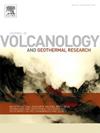Tracing the pre- to post-eruptive crystallization of trachybasaltic melts: insights into the 1651–1654 CE lavas of Mount Etna (Sicily, Italy)
IF 2.3
3区 地球科学
Q2 GEOSCIENCES, MULTIDISCIPLINARY
Journal of Volcanology and Geothermal Research
Pub Date : 2025-08-12
DOI:10.1016/j.jvolgeores.2025.108416
引用次数: 0
Abstract
Understanding the crystallization of silicate melts is key to reconstructing the processes occurring from magma rising to lava emplacement, the latter representing a major hazard for human settlements during effusive eruptions. Crystal growth, along with melt H₂O degassing, strongly influences lava rheology and surface flow behaviour. This study investigates the pre- to post-eruptive crystallization dynamics of trachybasaltic melts from the 1651–1654 CE eruption on Mount Etna's western flank (Sicily, Italy), one of the 17th century's most significant events due to its duration, lava field extent, and reach into inhabited areas. Investigation on different layers of a fractured pressure ridge allowed to reconstruct the crystallization history of a single flow unit, revealing significant textural differences between the inner and outer (crust) portion of the lava, allowing to quantify the extent of crystallization at subaerial conditions. By combining 2D and 3D textural analyses with chemical and mineralogical investigations, the pre-eruptive pressure-temperature (P–T) conditions of crystal formation were constrained. Phenocrysts nucleated in a vertically extended feeding system (down to 23 km below the sea level) at almost stationary condition of T = 1070–1060 °C. In the glass-rich crust, detailed chemical and textural analyses revealed chemical boundary layers around plagioclase microlites, which was used to model a subaerial growth rate of the outermost plagioclase rim in the order of 0.2–4.5 μm/s. These findings enhance our understanding of lava behaviour during flow, offering key insights for improving hazard models, monitoring, and response during effusive volcanic events similar to the 1651–1654 CE eruption.
追踪粗质玄武岩熔体喷发前后的结晶:对埃特纳火山(意大利西西里岛)1651-1654年熔岩的洞察
了解硅酸盐熔体的结晶是重建从岩浆上升到熔岩就位过程的关键,后者代表了喷涌喷发期间人类居住的主要危险。晶体生长,随着熔体h2o脱气,强烈影响熔岩流变学和表面流动行为。本研究研究了公元1651-1654年埃特纳火山西翼(意大利西西里岛)喷发的玄武岩熔体的爆发前后结晶动力学,这是17世纪最重要的事件之一,因为它的持续时间、熔岩场的范围和到达有人居住的地区。通过对断裂压力脊不同层的研究,可以重建单个流动单元的结晶历史,揭示熔岩内部和外部(地壳)部分之间的显著纹理差异,从而可以量化地面条件下的结晶程度。通过结合二维和三维结构分析以及化学和矿物学研究,限制了晶体形成的爆发前压力-温度条件。在T = 1070-1060°C的几乎静止条件下,在垂直延伸的供料系统(低至海平面以下23 km)中形成斑晶。在富玻璃壳中,详细的化学和结构分析揭示了斜长石微岩周围的化学边界层,并据此模拟了最外层斜长石边缘的地面生长速率为0.2 ~ 4.5 μm/s。这些发现增强了我们对熔岩在流动过程中的行为的理解,为改进危险模型、监测和应对类似于公元1651-1654年喷发的火山喷发事件提供了关键的见解。
本文章由计算机程序翻译,如有差异,请以英文原文为准。
求助全文
约1分钟内获得全文
求助全文
来源期刊
CiteScore
5.90
自引率
13.80%
发文量
183
审稿时长
19.7 weeks
期刊介绍:
An international research journal with focus on volcanic and geothermal processes and their impact on the environment and society.
Submission of papers covering the following aspects of volcanology and geothermal research are encouraged:
(1) Geological aspects of volcanic systems: volcano stratigraphy, structure and tectonic influence; eruptive history; evolution of volcanic landforms; eruption style and progress; dispersal patterns of lava and ash; analysis of real-time eruption observations.
(2) Geochemical and petrological aspects of volcanic rocks: magma genesis and evolution; crystallization; volatile compositions, solubility, and degassing; volcanic petrography and textural analysis.
(3) Hydrology, geochemistry and measurement of volcanic and hydrothermal fluids: volcanic gas emissions; fumaroles and springs; crater lakes; hydrothermal mineralization.
(4) Geophysical aspects of volcanic systems: physical properties of volcanic rocks and magmas; heat flow studies; volcano seismology, geodesy and remote sensing.
(5) Computational modeling and experimental simulation of magmatic and hydrothermal processes: eruption dynamics; magma transport and storage; plume dynamics and ash dispersal; lava flow dynamics; hydrothermal fluid flow; thermodynamics of aqueous fluids and melts.
(6) Volcano hazard and risk research: hazard zonation methodology, development of forecasting tools; assessment techniques for vulnerability and impact.

 求助内容:
求助内容: 应助结果提醒方式:
应助结果提醒方式:


